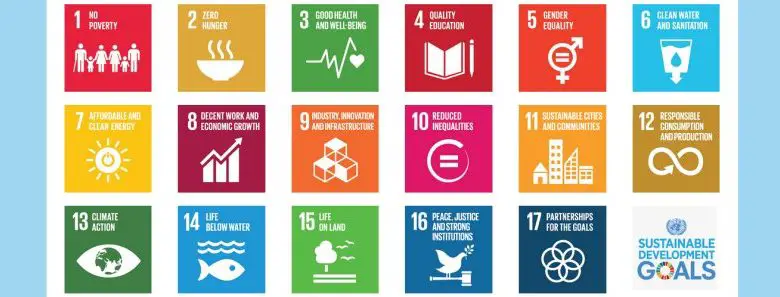
Sustainable Development Goals: is world change on its way?
This weekend saw the United Nations meet to announce the Sustainable Development Goals (SDGs), a set of 17 promises to commit to solving world problems, to “end poverty, protect the planet, and ensure prosperity for all”. But what does this all mean, will these promises become reality, and how will it affect disabled people? Meghan Hussey from Mosaic International, an organisation that works to make changes for people with disabilities across the world, explores.
No one can deny that the world is far from perfect, least of all for people with a disability. The recent BBC documentary, The World’s Worst Place to be Disabled, highlighted this by taking audiences to Ghana, where people with disabilities are treated with little or no respect. Sadly, these scenes are far from unique to Ghana. As Leonard Cheshire’s Nora Groce points out, they are not even an ‘African problem’ confined to one continent. These egregious abuses are far too common in countries around the globe.
It is a depressing reality. But although this is still the case, it is also true that right now is an important and exciting time to be fighting for disability rights and inclusion internationally.
From September 25 – 27, the United Nations met to announce the Sustainable Development Goals, which are a follow up to the Millennium Development Goals (MGDs) that were agreed on by members of the international community in 2000. These goals are in many ways what set the agenda for development agencies and international non-governmental organisations. They establish a vision of a better world that everyone can aspire to and work toward.
The problem is that this vision hasn’t to date been inclusive of disability. Disability has largely been ignored in the realm of international development and was mentioned nowhere in the MDGs. Without specific language around disability inclusion, many development organisations forgot about people with disabilities, leaving them out of the huge progress the world is making in many areas.
For example, MDG goal two is to achieve universal primary education. Yet not many programs considered that in order to be truly ‘universal’ they would have to also consider students with disabilities, who may need special education, instruction with sign language or braille, or wheelchair accessible school facilities. The result is that today it is still estimated that one third of out-of-school children – about 19 million – have a disability.
Development and human rights are inextricably linked. Without social systems that include and support people with disabilities, human rights abuses and stigma fester.
But the SDGs are an opportunity to move forward. For the first time, disability is explicitly mentioned in the targets, which will put pressure on countries and development programs to not only consider disability in their work, but to collect data on how they are making changes for people with disabilities. No longer excluded or dismissed as a special niche issue, disability is now ‘mainstreamed’ into the text. My hope is that people with disabilities will therefore now be mainstreamed into development programs too.
Shifts in attitude are already starting to be noticeable on the ground. At Mosaic International, we have worked with our local Tanzanian partner, Building a Caring Community (BCC) ,for over seven years to develop comprehensive, community-based services for people with intellectual disabilities and their families. When we were first invited to Moshi, there were no government-provided services for children with intellectual disabilities; all were out of school, mostly hidden or locked away at home.
A few years ago as part of an advocacy initiative, BCC decided to attempt to enroll some children served by the program in mainstream schools. They were all accepted and began attending the special education units in public schools. Later, the municipal Department of Education approached BCC to undertake a pilot inclusive education project at another local primary school. As a public-private partnership, the school system would provide two trained teachers and BCC would provide two staff as teacher aids. The school buildings were renovated to make them accessible. The curriculum is being developed continuously, as the project is breaking new ground in finding ways to both meet the individual needs of students and maximize social inclusion in an environment with limited resources.
Initiatives like this, that take place on the ground level, are what really constitute inclusive development. Local and national governments in Tanzania are recognising that the goal of universal primary education is not really universal unless it includes children with disabilities. There is hope on the horizon that the SDGs will spur governments and development agencies to commit both the political will and the budgetary support to make the move from beautiful word of inclusion on paper to promising initiatives in practice.
By Meghan Hussey
Get in touch by messaging us on Facebook, tweeting us @DHorizons, emailing us at editor@disabilityhorizons.com or leaving your comments below.
I attended the Int Conf on Sust Dev. in NYC. I’ve been taking the MOOCs, a great way to learn all things GW and Sustainability. Also, please see: thiscouldhappen.com if you have disabilities and curiosity, and want to help the new world become a totally-different world, one with decent VALUES! Ethics, caring, People and creature-loving. Also, to help the site go, please sign petition at: https://youpower.democracyforamerica.com/p/ThisCouldHappen